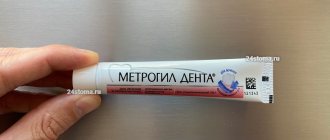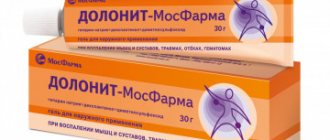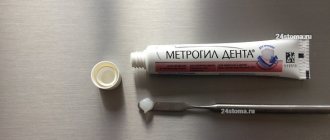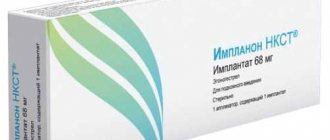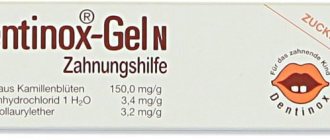Metrogyl plus vaginal gel. 50g tube 1 piece + applicator 1 piece
Pharmacological group:
Antimicrobial and antiprotozoal agent + antifungal agent.
Pharmacodynamics:
A combined drug for intravaginal use, the effectiveness of which is due to the presence of two active components in its composition: metronidazole and clotrimazole.
The mechanism of action of metronidazole is the biochemical reduction of the 5-nitro group by intracellular transport proteins of anaerobic microorganisms and protozoa. The reduced 5-nitro group of metronidazole interacts with the DNA of microbial cells, inhibiting the synthesis of their nucleic acids, which leads to the death of bacteria. Active against Trichomonas vaginalis, Entamoeba histolytica, Gardnerella vaginalis, Giardia intestinalis, Lamblia spp., as well as obligate anaerobes Bacteroides spp., (including Bacteroides fragilis, Bacteroides thetaitaomicron, Bacteroides vulgatus), Fusobacterium spp., Veillonella spp., Prevotella (Prevotella bivia, Prevotella buccae, Prevotella disiens) and some gram-positive microorganisms (Eubacterium spp., Clostridium spp., Peptococcus spp., Peptostreptococcus spp.) The minimum inhibitory concentration (MIC) for these strains is 0.125-6.25 μg/ml. Aerobic microorganisms and facultative anaerobes are insensitive to metronidazole, but in the presence of mixed flora (aerobes and anaerobes), metronidazole acts synergistically with antibiotics effective against common aerobes. Clotrimazole is an imidazole derivative. Has a fungicidal effect. Reduces the synthesis of ergosterol, which is an integral part of the cell membrane of the microbial wall, and leads to a change in its structure and properties. In small concentrations it acts fungistatically, and in large concentrations (more than 20 μg/ml) it is fungicidal, and not only on proliferating cells. At fungicidal concentrations, it interacts with mitochondrial and peroxidase enzymes, resulting in an increase in the concentration of hydrogen peroxide to a toxic level, which also contributes to the destruction of fungal cells. It has high activity against pathogenic dermatophytes (Trichophyton mentagrophytes, Microsporum canis, Epidermophyton floccosum), yeast and mold fungi (genus Candida, Torulopsis glabrata, genus Rhodotorula, Pityrosporum orbiculare).
Pharmacokinetics:
After intravaginal administration, metronidazole undergoes systemic absorption (about 56%). The relative bioavailability of the vaginal gel is 2 times higher than the bioavailability of a single dose (500 mg) of metronidazole vaginal tablets. Penetrates into breast milk and most tissues, passes through the blood-brain barrier and placenta. After a single intravaginal administration of 5 g of gel (50 mg of metronidazole), the average maximum concentration in the blood serum of healthy women is 237 ng/ml, which is 2% of the average maximum concentration of metronidazole when taken orally at a dose of 500 mg. The time to reach maximum concentration is 6-12 hours. Communication with plasma proteins is less than 20%. Metabolized in the liver by hydroxylation, oxidation and glucuronidation. The activity of the main metabolite (2-oxymetronidazole) is 30% of the activity of the parent compound. Excreted by the kidneys - 60-8% of the dose of a systemic drug (20% of this amount unchanged), by the intestines - 6-15% of the dose of a systemic drug.
When using clotrimazole intravaginally, no more than 3-10% of the administered dose is absorbed. High concentrations in vaginal secretions and low concentrations in blood persist for 48-72 hours. In the liver, clotrimazole is rapidly metabolized to inactive metabolites.
Metrogil Plus
Metrogyl Plus is a combined two-component drug for use in gynecological practice. Contains the antiprotozoal and antimicrobial agent metronidazole and the synthetic antifungal agent clotrimazole. Metronidazole acts on dysenteric amoeba, intestinal lamblia, vaginal trichomonas, bacteroides, fusobacteria, prevotella, gardnerella, clostridia, peptococci, peptostreptococci. Clotrimazole acts on fungi and bacteria causing their death. Suppresses the biological synthesis of the cell membrane sterol of fungi and protozoa ergosterol. In small dosages it slows down the growth and development of fungi, in large doses it causes their death as a result of interaction with mitochondrial enzymes and peroxidases, which leads to an increase in the level of hydrogen peroxide to a level incompatible with further life activity. Acts on blastomycetes, candida, coccidioides immitis, cryptococci, trichophytons, mycospores, epidermophytons, histoplasmas, paracoccidioides, sporothrix, trichomonas vaginalis, streptococci, staphylococci, E. coli, Klebsiella, pseudomonas, proteus. After intravaginal administration, slightly more than half of the administered dose of metronidazole (56%) is absorbed into the systemic circulation. Peak concentration is reached within 6-12 hours. Elimination from the body occurs mainly through urine and, to a lesser extent, through feces. With intravaginal administration of clotrimazole, about 3-10% of the administered dose is absorbed into the systemic circulation. The high content of the active substance in the vagina is maintained for 2-3 days. Metrogyl Plus is prescribed for gardnerellosis of various etiologies, inflammation of the vulva and vaginal mucosa due to candida infection, and urogenital trichomoniasis. Single dose – 1 full applicator. Frequency of application – twice a day. The optimal time for use is in the morning and evening. The duration of the course of pharmacotherapy is five days with the possibility of a second course after two weeks.
Possible unwanted side reactions: burning sensation, more frequent urination than usual, skin rashes, urticaria. Systemic side effects may include dizziness, cephalalgia, vomiting, and gastrointestinal cramps. Metrogyl Plus is not prescribed for a decrease in the number of leukocytes per unit volume of blood, epilepsy and other organic disorders of the central nervous system, disorders of one or more liver functions resulting from damage to its parenchyma, during pregnancy in the period from the first day of the final menstruation to the 13th week, during breastfeeding, as well as in case of individual intolerance to active ingredients or excipients. While using Metrogyl Plus, you should refrain from consuming alcoholic beverages, because when metronidazole is combined with ethanol, disulfiram-like phenomena may develop (pain due to gastrointestinal spasms, vomiting, including productive ones, cephalalgia, sudden severe hyperemia of the facial skin). Metronidazole may cause a positive Nelson test. The drug is used exclusively intravaginally! It is necessary to protect the eyes from accidental contact with the drug. During the course of medication, sexual intercourse should be avoided. Metrogyl Plus, when used together, potentiates the effects of indirectly acting anticoagulants. Metrogyl Plus is not compatible with drugs that reduce skeletal muscle tone, which block receptors and membrane channels without opening them, without causing depolarization (vecuronium). When used together with drugs containing lithium, the level of lithium in the blood may increase. Phenobarbital activates the liver microsomal enzyme system, as a result of which the metabolism of metronidazole will proceed more intensively.
Metrogyl plus vag.gel (tube 50g + application No. 1)
A country
India
Country of manufacture may vary depending on the batch of goods. Please check with the operator for detailed information when confirming your order.
Active substance
Clotrimazole + Metronidazole
Compound
Tube 50 g
Metronidazole 10 mg, clotrimazole 20 mg per 1 g. Excipients: methylhydroxybenzoate, propylhydroxybenzoate, disodium edetate, propylene glycol, carbomer-940, benzyl alcohol, sodium hydroxide, purified water. Vaginal gel is white or almost white, opalescent, homogeneous.
pharmachologic effect
A combined drug for intravaginal use, the effectiveness of which is due to the presence of two components in its composition: metronidazole and clotrimazole. Metronidazole is active against protozoa: Entamoeba histolytica, Giardia lamblia, Trichomonas vaginalis, as well as gram-negative anaerobes: Bacteroides fragilis, Fusobacterium spp., Prevotella spp. (Prevotella bivia, Prevotella buccae, Prevotella disiens), Gardnerella vaginalis and some gram-positive microorganisms: Clostridium perffringens, Clostridium difficile, Peptococcus spp., Peptostreptococcus spp. The MIC for these strains is 0.125-6.25 μg/ml. Clotrimazole has a fungicidal and bactericidal effect. Inhibits the biosynthesis of ergosterol, which regulates the permeability of the cell wall of microorganisms. In small concentrations it acts fungistatically, and in large concentrations it is fungicidal. At fungicidal concentrations, it interacts with peroxidases and mitochondrial enzymes, resulting in an increase in the concentration of hydrogen peroxide to a toxic level, which also leads to the death of fungi. Has high activity against fungi: Blastomyces dermatitidis, Candida spp., Coccidioides immitis, Cryptococcus neoformans, dermatophytes (Trichophyton mentagrophytes, Microsporum canis, Epidermophyton foccosum), Histoplasma capsulatum, Paracoccidioides brasiliensis, Sporothrix schenckii; protozoa: Trichomonas vaginalis; gram-positive bacteria: Streptococcus spp., Staphylococcus spp., Escherichia coli, Klebsiella pneumoniae, Pseudomonas aeruginosa, Proteus mirabilis.
Mode of application
The drug is administered intravaginally. The recommended dose is 5 g (one full applicator) 2 times a day (morning and evening). The course of treatment is 5 days. If necessary, the course of treatment can be repeated after 2 weeks.
Interaction
When used simultaneously, the drug enhances the effect of indirect anticoagulants. Concomitant use with non-depolarizing muscle relaxants (vecuronium) is not recommended. When used simultaneously with lithium preparations, an increase in the concentration of lithium in the blood plasma is possible. Phenobarbital accelerates the metabolism of metronidazole due to the induction of microsomal liver enzymes, while cimetidine reduces it. Amphotericin B, nystatin, natamycin reduce the effectiveness of clotrimazole when used simultaneously. When used simultaneously with ethanol, the drug can cause disulfiram-like reactions.
Side effect
Local reactions: - burning sensation or increased urination; - in the sexual partner - a burning sensation or irritation of the penis. Systemic reactions: possible dizziness, headache, nausea, cramping pain in the abdominal cavity. Allergic reactions: skin rash, urticaria. The patient should be warned to stop using the drug and consult a doctor if any unwanted side effects occur.
Contraindications
— leukopenia (including history);
— organic damage to the central nervous system (including epilepsy); - liver failure; — I trimester of pregnancy; - hypersensitivity to the components of the drug. Use during pregnancy and breastfeeding The drug is contraindicated in the first trimester of pregnancy. The use of the drug in the second and third trimester of pregnancy is possible only for strict medical reasons and under the supervision of a doctor (without the use of an applicator). When prescribing the drug during lactation, breastfeeding must be stopped.
Overdose
There were no cases of drug overdose when prescribed in recommended doses.
special instructions
When using the drug, alcohol consumption is contraindicated (a disulfiram-like reaction may develop: cramping abdominal pain, nausea, vomiting, headache, sudden rush of blood to the face). Metronidazole can immobilize treponemes and lead to a false-positive Nelson test. The drug is intended for intravaginal use only. Avoid contact of the drug with the eyes. During the course of therapy it is necessary to abstain from sexual activity.
Dispensing conditions in pharmacies
On prescription
